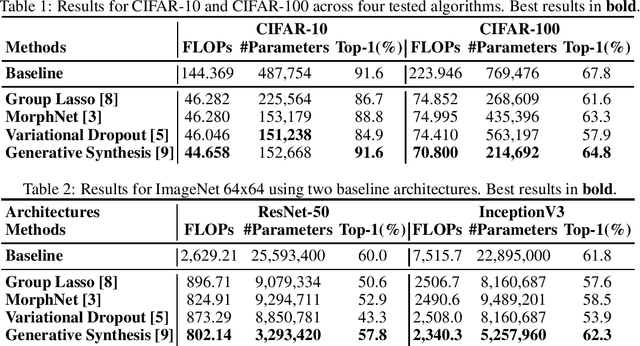State of Compact Architecture Search For Deep Neural Networks
Paper and Code
Oct 15, 2019
The design of compact deep neural networks is a crucial task to enable widespread adoption of deep neural networks in the real-world, particularly for edge and mobile scenarios. Due to the time-consuming and challenging nature of manually designing compact deep neural networks, there has been significant recent research interest into algorithms that automatically search for compact network architectures. A particularly interesting class of compact architecture search algorithms are those that are guided by baseline network architectures. Such algorithms have been shown to be significantly more computationally efficient than unguided methods. In this study, we explore the current state of compact architecture search for deep neural networks through both theoretical and empirical analysis of four different state-of-the-art compact architecture search algorithms: i) group lasso regularization, ii) variational dropout, iii) MorphNet, and iv) Generative Synthesis. We examine these methods in detail based on a number of different factors such as efficiency, effectiveness, and scalability. Furthermore, empirical evaluations are conducted to compare the efficacy of these compact architecture search algorithms across three well-known benchmark datasets. While by no means an exhaustive exploration, we hope that this study helps provide insights into the interesting state of this relatively new area of research in terms of diversity and real, tangible gains already achieved in architecture design improvements. Furthermore, the hope is that this study would help in pushing the conversation forward towards a deeper theoretical and empirical understanding where the research community currently stands in the landscape of compact architecture search for deep neural networks, and the practical challenges and considerations in leveraging such approaches for operational usage.
 Add to Chrome
Add to Chrome Add to Firefox
Add to Firefox Add to Edge
Add to Edge